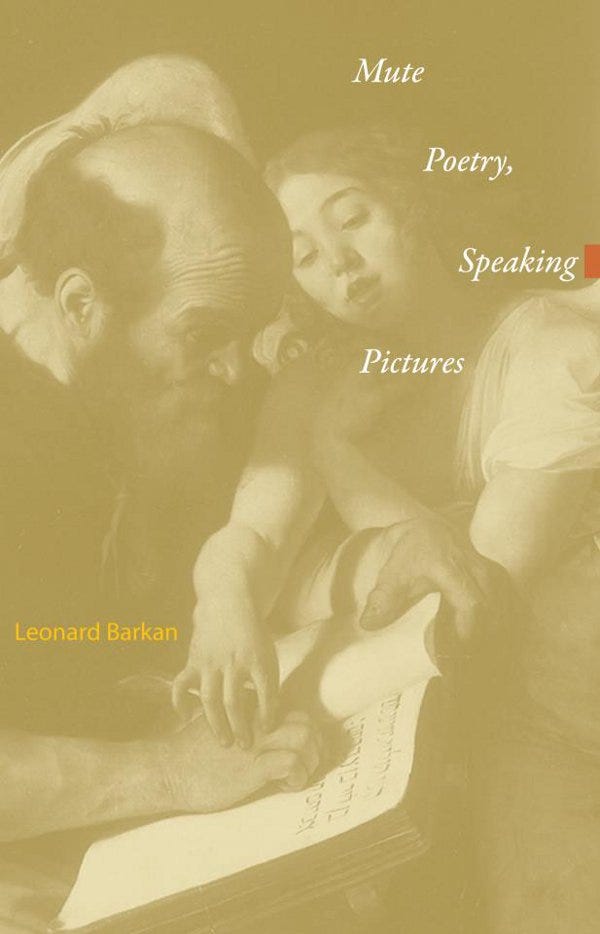Comparing Literatures
“Leonard Barkan & Tom Hare in Conversation: Mute Poetry, Speaking Pictures”
Labyrinth Books
Dec. 4th at 6:00PM
Free admission

Comparative Literature doesn’t have it easy. It’s the discipline that everyone loves to hate, perhaps because it brings to mind tweedy old Professors and earnest young hipsters who read too much (or pretend to). “All that literary theory has gone to their heads,” we scoff, content with the knowledge that our own disciplines concern themselves with more important matters, or at least things that actually happened. And while that impulse to mock deconstruction and Derrida is hard to avoid, it isn’t fair to the field as a whole, especially when it does what it does best — actually comparing literature.
That was particularly apparent in the conversation between Leonard Barkan and Thomas Hare at Labyrinth Books on Tuesday, in which the two Princeton professors discussed Barkan’s new work, Mute Poetry Speaking Pictures (Princeton Univ. Press, $22.95). This book is, according to its cover, filled “splendid meditations” on the relationship between Writing and Art from Simonides to Shakespeare.
This relationship between painting and poetry has always been akin to one between particularly competitive siblings. Each medium desires what the other has; each has its own advantages, and its own limitations. Painting is powerful and immediate, perhaps even more accessible, but nevertheless static — lacking the linear and narrative qualities poetry allows. Then there’s the question of durability — words are reproducible in a way Painting is not — at least before Warhol — and so while Horace can boast about lasting longer than Bronze, once a canvas gets ripped, dropped, burned, bombed, or subject to all manner of minor catastrophes common to the course of life, it’s gone for good.
There’s quite a bit more to it, of course, and this author can hardly do justice to the themes of an entire book in a few paragraphs, yet one should be able to catch a glimpse of something that is common to all humanity, to all struggles for creative expression.
Indeed, that’s what makes Comparative Literature so particularly interesting, for while Professor Barkan plotted the course of the interplay between mediums in Europe, Professor Hare was there to note the existence of an identical idea in Asia. Plutarch may have written “Poema pictura loquens, pictura poema silens” — poetry is a speaking picture, painting a silent poetry — but so did the medieval Japanese poet who noted that “what is painted is mute poetry and what is written is a picture with a voice.”
It’s wonderful when such erudite scholars as Professors Barkan and Hare discuss an issue that is so central to the human experience, transcending time and culture. Even today we can’t escape the interplay between what is seen and what is heard. These senses are nothing alike, yet we can still speak, for instance, of ‘framing’ within a story — a visual metaphor — and we recognize that there exist images that cannot be described, and stories that cannot be depicted. Theater and, nowadays, film try to encompass both the auditory and the visual in a careful balance, while even music must recognize the influence of other mediums of human expression. No single form is an island, it seems — merely part of a continent, one with particularly fuzzy and disputed borders, populated with nations all looking enviously at the natural resources of the others.
So although this article may not have told you anything at all about either poetry or painting, let alone the relationship between them, the hope is that these reflections might convince some that Comp Lit is not merely a repository for all that which is absurd and French.